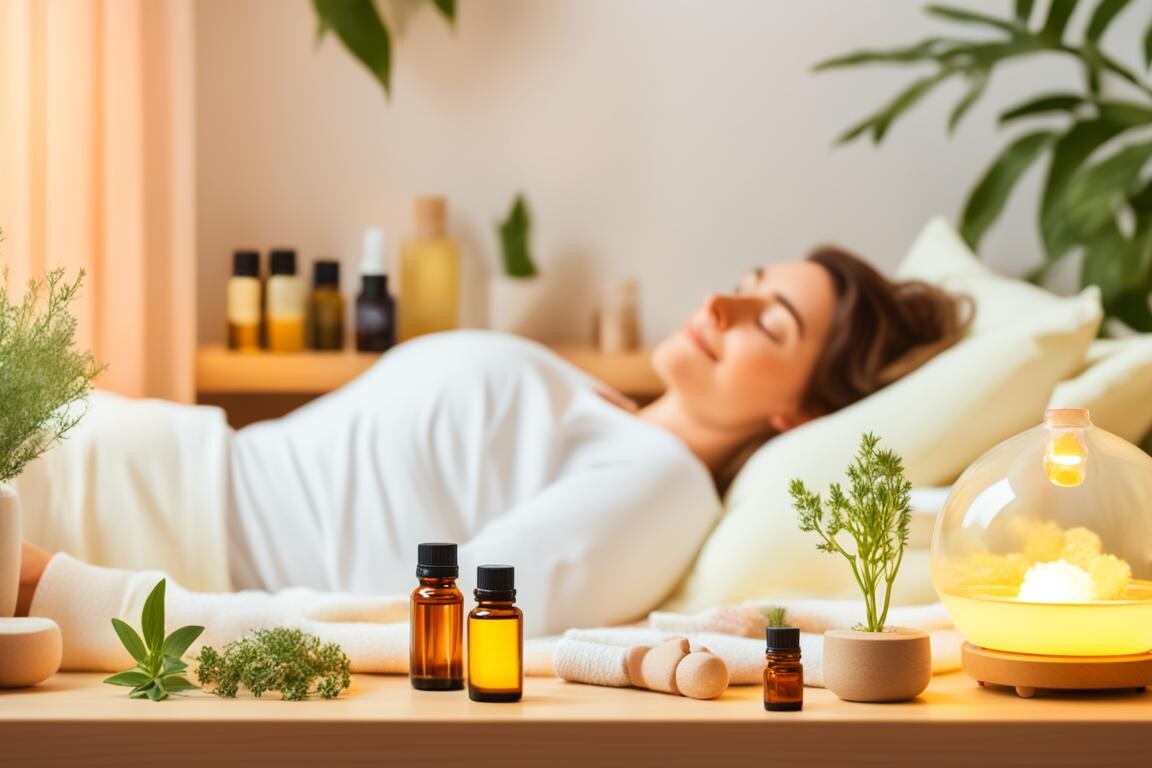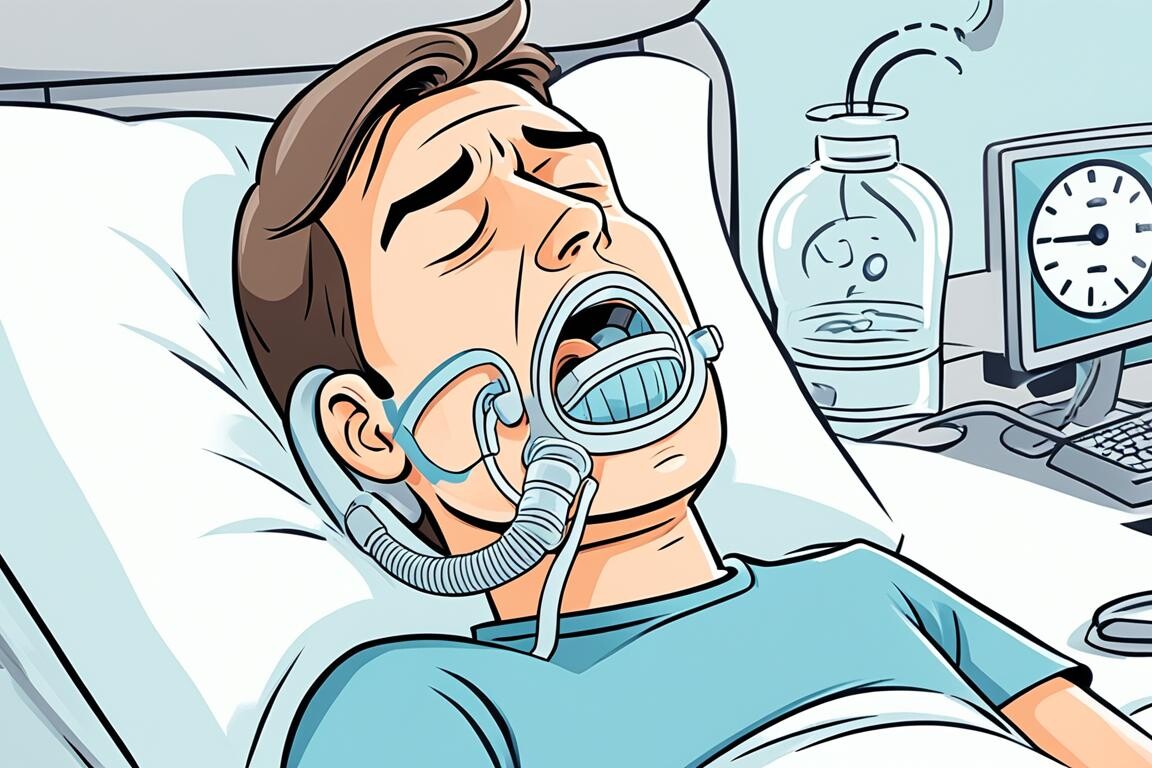If you have trouble sleeping because of obstructive sleep apnea (OSA), an apnea mouthpiece might be the answer. These devices move your jaw and tongue to keep your airway open. This helps stop episodes of blocked airways, waking up, and falling asleep again.
Using an apnea mouthpiece can make your sleep better, reduce snoring, and make sure your organs get enough oxygen.
Oral appliance therapy is a good option for those who don’t want surgery or don’t like CPAP machines. These devices fit your mouth perfectly and come in different types. Some move your jaw forward, while others keep your tongue in place.
With the right apnea mouthpiece, you can control your obstructive sleep apnea. This means you can sleep better and more peacefully.
Table of Contents
ToggleWhat is an Apnea Mouthpiece?
Oral appliances for sleep apnea are special devices you wear in your mouth at night. They help keep your airway open and improve airflow. This can help manage obstructive sleep apnea (OSA).
Types of Apnea Mouthpieces
There are two main types of devices for treating OSA:
- Mandibular Advancement Devices (MADs): These devices gently move your lower jaw forward. This opens up your airway for better breathing.
- Tongue-Stabilizing Devices (TSDs): These devices use suction to keep your tongue in a forward position. This stops it from blocking your airway while you sleep.
Mandibular advancement devices and tongue-stabilizing devices are effective for mild to moderate sleep apnea. Custom-made devices work better than over-the-counter ones for obstructive sleep apnea.
Mandibular Advancement Devices (MADs)
Mandibular advancement devices (MADs) are a common way to treat sleep apnea. They move your lower jaw forward, which helps keep your airway open at night. This makes it easier to breathe while you sleep.
These devices have two parts that fit over your teeth. They are connected with screws or rubber bands. This lets you adjust how far your jaw moves forward. Moving your jaw helps keep your airway open, reducing sleep apnea symptoms.
- MADs can make you feel more awake during the day, reduce snoring, lower blood pressure, and improve your life quality, just like CPAP therapy.
- They work best for people with mild to moderate sleep apnea, especially the young, side sleepers, women, and those with a receding jaw.
- However, MADs might not work as well for older adults, the obese, those with stiff jaws, people with dental issues, or those with central sleep apnea.
MADs are not as effective as CPAP in stopping breathing pauses or improving oxygen levels. But they are more comfortable and easy to carry around. Custom MADs made by a dentist usually work better than ones you can buy over the counter. They are made just for you.
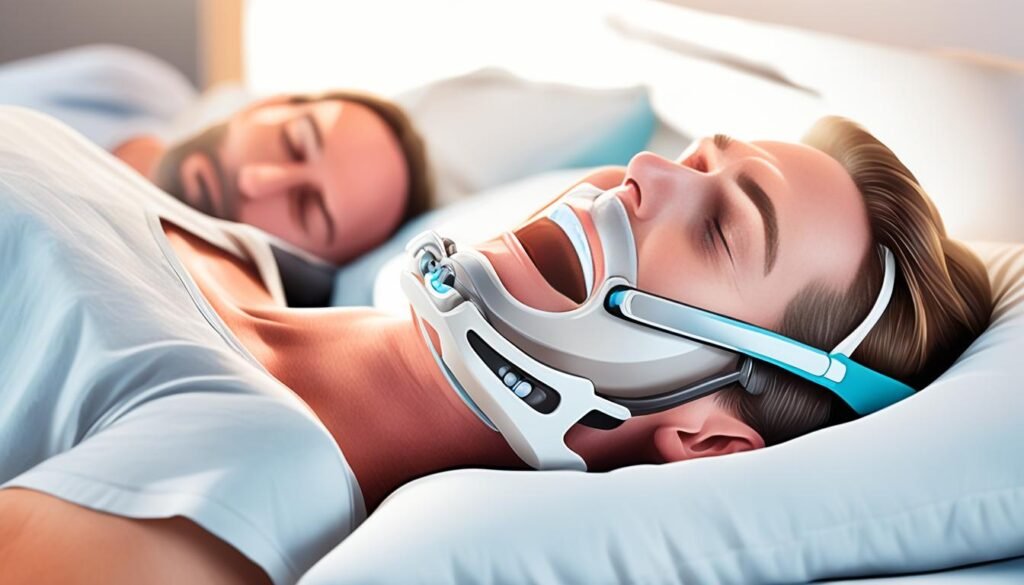
Working with your healthcare provider is key when using MAD therapy. They can help you choose the right device and check how well it’s working. With the right treatment, MADs can help manage your sleep apnea and improve your health.
Tongue-Stabilizing Devices (TSDs)
Tongue-stabilizing devices (TSDs) are another way to help with obstructive sleep apnea (OSA). They don’t move your jaw forward like some other devices do. Instead, they use suction to gently pull your tongue forward. This keeps your airway open and helps you breathe better.
These devices might be good for people who can’t use MADs because of weak teeth or jaw issues. They help stop your tongue from blocking your airway, which is a common cause of OSA. This can make sleeping much better.
Some popular TSD models include the AveoTSD and Good Morning Snore Solution devices. It’s important to get these devices fitted by a doctor to make sure they work well and are comfortable.
Even though they’re not as common as MADs, TSDs can be a good choice for some people with OSA. But they might not work for everyone. For example, they’re not good for people who can’t stick their tongue out, have central sleep apnea, or are kids. It’s important to use, clean, and take care of these devices to make sure they work right.
If CPAP therapy doesn’t work or isn’t comfortable, trying a tongue-stabilizing device might be an option. Always talk to a healthcare provider before trying one to see if it’s right for you.
How Effective are Apnea Mouthpieces?
Oral appliances, like apnea mouthpieces, can be a great solution for treating obstructive sleep apnea (OSA). They might not work as well as continuous positive airway pressure (CPAP) therapy. Yet, they can still make your sleep better and boost your health.
Compared to CPAP Therapy
Studies show that MADs, a type of oral appliance, can cut down on breathing pauses and increase oxygen levels while you sleep. But CPAP therapy is still better at these important tasks.
On the other hand, oral appliances can be as good as CPAP in making you feel less sleepy during the day, reducing snoring, and lowering blood pressure. They might also help with symptoms of depression and make life better overall.
One big plus of oral appliances is how comfortable and easy they are to use compared to CPAP. This makes them more likely to be used every night, which is key for treating sleep apnea.
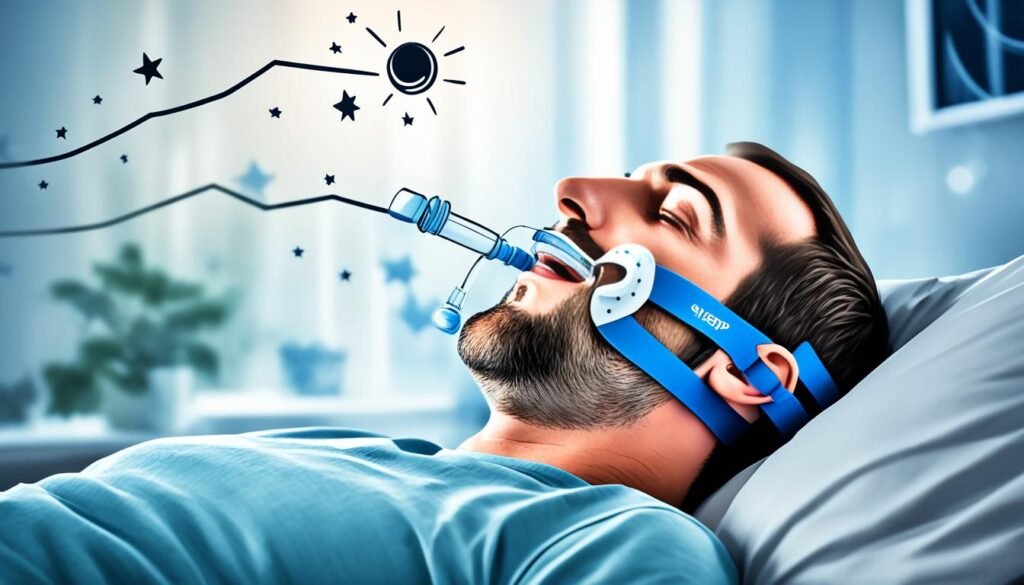
To wrap it up, CPAP therapy is the top choice for treating serious OSA. But for those with mild to moderate sleep apnea who want something easier to use, oral appliances are a great option.
Apnea Mouthpiece Benefits
If you’re having trouble with obstructive sleep apnea, an apnea mouthpiece could help. These devices are made to boost your sleep quality and health by tackling the root causes of your sleep apnea.
Using an apnea mouthpiece can cut down the number of times you stop breathing or breathe shallowly at night. It keeps your airway open. This leads to better blood oxygen levels, which means you’ll sleep more soundly and feel less tired during the day.
- Decreases snoring frequency and volume
- Enhances quality of life and decreases daytime sleepiness
- Improves diastolic and systolic blood pressure over time
Apnea mouthpieces also help reduce snoring. This means better sleep for you and your partner. It’s a win-win situation.
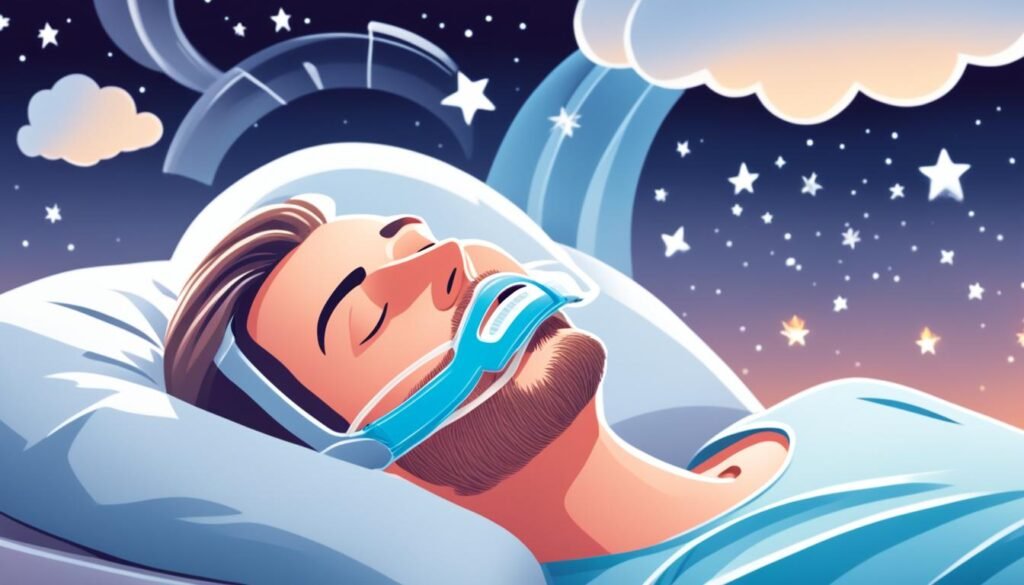
Studies have found that these devices can make your blood pressure better over time. This is great news for people with sleep apnea, as it lowers the risk of heart problems.
The benefits of using an apnea mouthpiece are many. They improve sleep quality, cut down on daytime tiredness, and boost overall health. They’re a simpler and more effective option compared to CPAP therapy.
Who Can Use an Apnea Mouthpiece?
An apnea mouthpiece, or oral appliance, is great for people with mild to moderate sleep apnea (OSA). It’s for those who can’t use or don’t like CPAP therapy. These devices move the lower jaw forward to keep the airway open while sleeping.
They are more comfy and easy to carry than CPAP machines. That’s why many people choose them. But, they’re not for everyone. They don’t work for kids, people with severe OSA, or those with dental issues that make them hard to fit.
Sometimes, an apnea mouthpiece is used with CPAP therapy. This is helpful when you’re traveling or don’t have your CPAP machine. It makes breathing easier and more comfortable.
Always talk to a healthcare expert, like a sleep specialist or dentist, to see if an apnea mouthpiece is right for you. They can check your condition, give you a proper diagnosis, and help with fitting and adjusting the device for the best results.
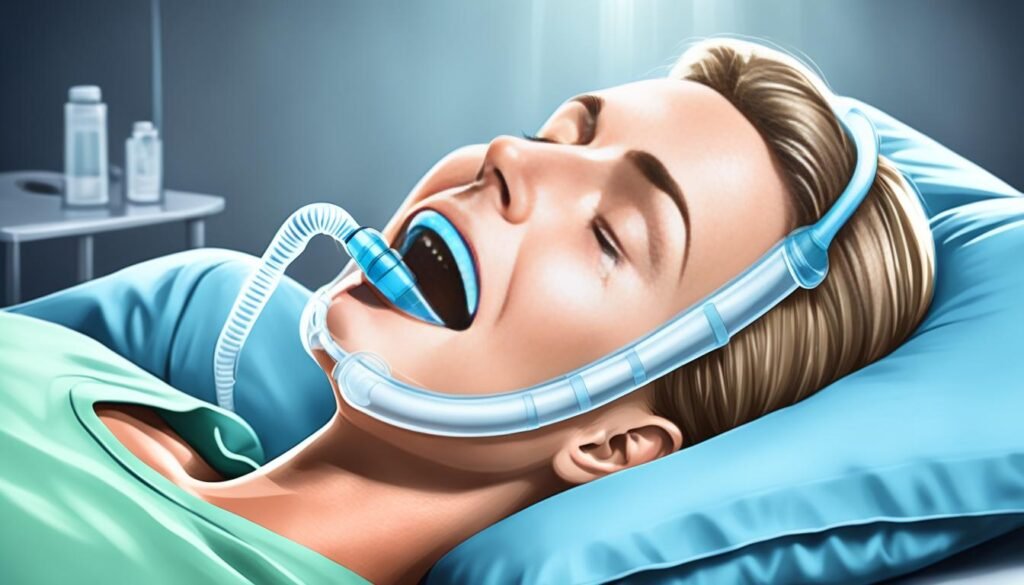
The success of an apnea mouthpiece can differ for each person. You might need regular checks and adjustments for the best results. With the help of a qualified healthcare provider, you can find the best treatment to improve your sleep and health.
Getting an Apnea Mouthpiece
If you’re having trouble with obstructive sleep apnea (OSA), an apnea mouthpiece might be a good option. It’s a comfy and effective choice compared to traditional CPAP therapy. First, you need a diagnosis and fitting from a qualified dentist.
Diagnosis and Fitting
To start, you’ll go through a sleep study. This can be done in a sleep lab or at home. It measures your breathing, oxygen levels, and other sleep metrics to confirm OSA.
After confirming OSA, your doctor will talk about treatment options. Oral appliance therapy might be suggested. If so, you’ll see a dentist who specializes in sleep apnea.
The dentist will check your mouth and jaw. They’ll make a custom-fit mouthpiece for you. This ensures it fits well and works effectively, which is key for success with your apnea mouthpiece.
The steps to get an apnea mouthpiece vary, but your healthcare team will guide you. They’ll help you find the right solution for better sleep and health.
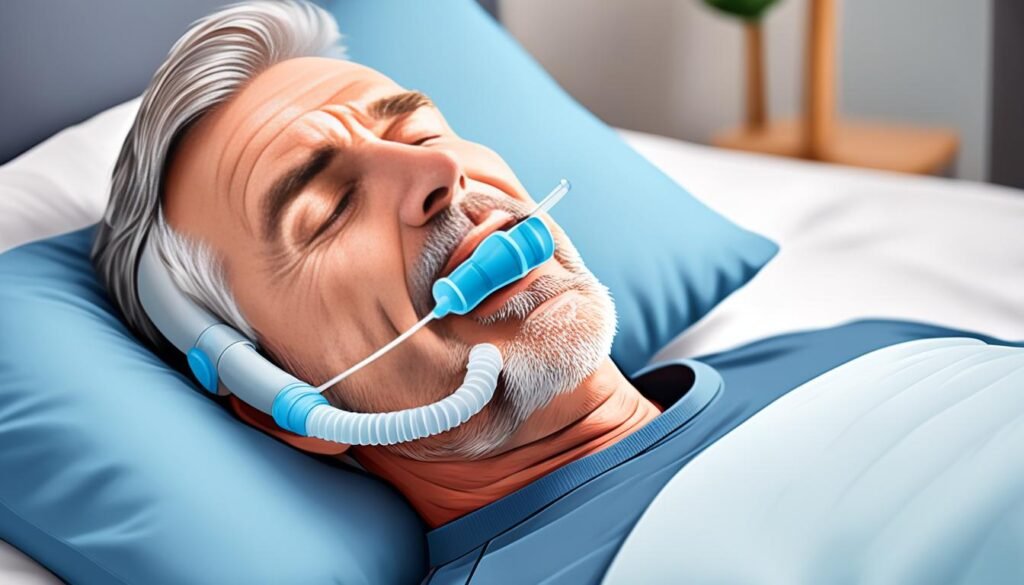
It’s important to keep your mouthpiece clean and follow your dentist’s care instructions. With the right treatment and a well-fitting device, you can improve your sleep and health.
Adjusting and Monitoring Your Apnea Mouthpiece
After getting your custom apnea mouthpiece, your dentist will want you to wear it every night. You’ll also need to visit them regularly to check on your progress. Over time, your dentist will tweak the device to make sure it fits just right and helps open your airway.
Your doctor might suggest another sleep study after adjusting the mouthpiece to see if it’s working well for your sleep apnea symptoms. It’s important to keep up with regular visits to your dental and medical teams. This helps make sure your apnea mouthpiece treatment keeps working well over time.
Here are some tips for adjusting and monitoring your apnea mouthpiece:
- Wear the mouthpiece every night, even if it feels odd at first.
- Get used to wearing it during the day too.
- Breathe through your nose with the mouthpiece on to help adjust.
- Talk to your dentist if you keep having problems like gagging, it falling out, or discomfort after three weeks.
- Go to all follow-up appointments for any needed changes to your mouthpiece.
- Have a repeat sleep study as advised to make sure the mouthpiece is doing its job.
Getting your apnea mouthpiece adjusted and checked regularly is crucial for good sleep health.
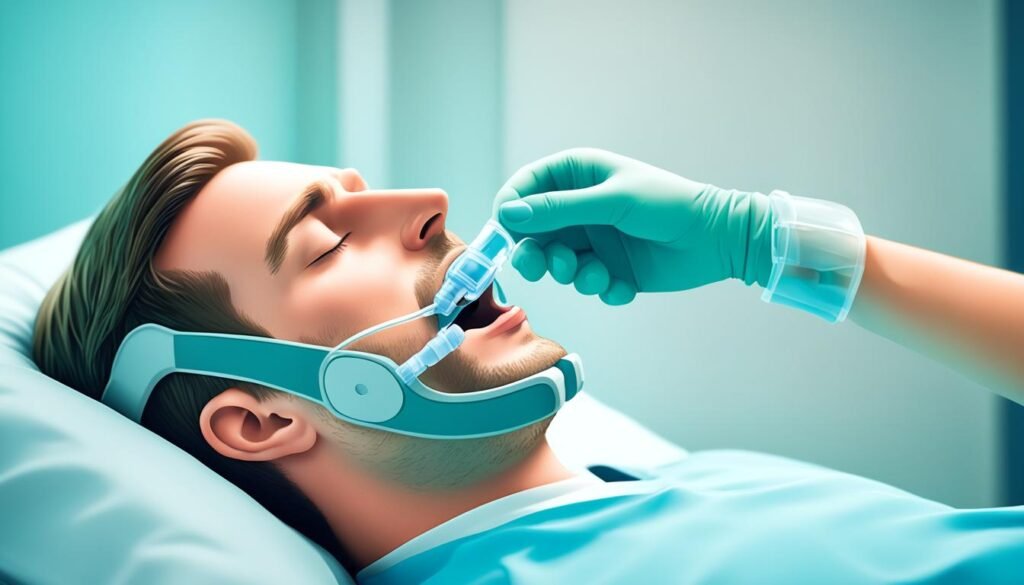
Side Effects and Risks
Apnea mouthpieces can help manage snoring and sleep apnea, but they have side effects and risks. It’s key to know these before choosing an apnea mouthpiece.
Common side effects include teeth discomfort, jaw joint pain, dry mouth, and too much saliva. These issues are usually mild and go away after a few weeks.
- Gum irritation and teeth grinding can happen with long-term use of an apnea mouthpiece.
- Changes to bite and tooth alignment might be seen if the mouthpiece doesn’t fit right.
Working closely with your dentist is key to fix any problems and adjust your apnea mouthpiece. Serious risks like worse sleep apnea symptoms are rare but can happen if the device doesn’t fit or isn’t used right.
The side effects of apnea mouthpieces and risks of using an apnea mouthpiece are mostly mild. Still, talking to your healthcare provider is crucial. They can help you understand the benefits and risks. This way, you can decide if an apnea mouthpiece is right for you.
When Not to Use an Apnea Mouthpiece
Apnea mouthpieces can help those with mild to moderate sleep apnea. But, they’re not right for everyone. Knowing when they’re not a good choice is key to finding the right treatment.
If your sleep apnea is mild to moderate, an apnea mouthpiece might help. This is true if your AHI score is between 5 and 30. But, if your score is over 30, a mouthpiece might not be enough. Your oxygen levels could still drop too low during sleep.
Apnea mouthpieces aren’t good for people with central sleep apnea. This type of apnea happens when the brain doesn’t tell the lungs to breathe right. A mouthpiece can’t fix this problem.
- Severe obstructive sleep apnea (AHI above 30)
- Central sleep apnea
- Insufficient teeth to hold the device in place
- Significant jaw joint issues
People with certain dental problems might not use an apnea mouthpiece well. This includes not having enough teeth to hold it or jaw joint issues. In these cases, other treatments like CPAP therapy or surgery might be better.
Working with your healthcare provider is key to finding the right sleep apnea treatment. Knowing the limits and when not to use apnea mouthpieces helps you make a smart choice. This way, you can find the best solution for your needs.
Caring for Your Apnea Mouthpiece
Cleaning and Maintenance
Keeping your apnea mouthpiece in good shape is key for its effectiveness and your oral health. Your dentist will guide you on how to care for it. This ensures your mouthpiece stays in top condition.
To clean it, brush the mouthpiece with a soft-bristle toothbrush and mild soap. Then, rinse it well and let it air dry. Check your mouthpiece often for any wear or damage. Have it professionally cleaned and checked every 6 months by your dentist.
Storing your mouthpiece in a protective case when not in use helps too. Regular cleaning and maintenance keep your apnea mouthpiece working well. This means it will continue to help you get the sleep apnea relief you need.
- Brush the mouthpiece with a soft-bristle toothbrush and mild soap, rinse thoroughly, and air dry.
- Inspect the mouthpiece regularly for any signs of wear or damage.
- Have your mouthpiece professionally cleaned and checked by your dentist every 6 months.
- Store the mouthpiece in a protective case when not in use to prevent damage.
By following these tips, your apnea mouthpiece will keep working well. This means you can get the sleep apnea relief you need every night.
Combining Apnea Mouthpiece with Other Therapies
Using an apnea mouthpiece can be paired with other sleep apnea treatments like CPAP therapy. This mix can make treatment more comfy and effective for those with obstructive sleep apnea.
About 50% of people stop using CPAP within a year because it’s uncomfortable. Adding an apnea mouthpiece can make CPAP more comfortable. It lets patients use CPAP at lower pressure, which reduces noise and discomfort.
Studies found that using both an oral appliance and CPAP cut down on sleep apnea events. Those using both methods had about 2 events per hour. Those on just CPAP had around 4 events per hour. This shows the combo therapy is more effective.
If an apnea mouthpiece doesn’t fully help, doctors might suggest combining it with other treatments. This can make patients stick with their treatment better and use it more consistently.
In summary, mixing an apnea mouthpiece with CPAP therapy is a great way to tackle the issues of each treatment alone. This method boosts comfort, makes patients more likely to stick with treatment, and improves overall results for those with obstructive sleep apnea.
Conclusion
Apnea mouthpieces, or oral appliances, can help many people with sleep apnea who can’t use CPAP therapy. These devices fit your mouth and move your jaw or tongue to keep your airway open while you sleep. This reduces pauses in breathing, boosts oxygen levels, and cuts down on snoring and daytime tiredness.
They might not work as well as CPAP in all areas, but oral appliances are often more comfy and easy to use for a long time. This leads to better sticking with the treatment and better results. With the right fit, adjustments, and care, an apnea mouthpiece can make a big difference in sleep quality and health for mild to moderate sleep apnea.
The benefits of using an apnea mouthpiece are clear. These devices are a simple, tailored way to breathe easier and sleep better. They support your long-term health and well-being. If you’re new to sleep apnea treatment or looking for a more comfy option, checking out apnea mouthpieces could be the right step for you.
FAQ
What is an apnea mouthpiece?
Oral appliances, or mouthpieces, help treat sleep apnea by keeping your mouth open. They move your jaw forward, which also moves your tongue. This makes more space for air to flow in your throat while you sleep.
What are the main types of apnea mouthpieces?
There are two main types: MADs and TSDs. MADs pull your jaw forward. TSDs use suction to keep your tongue forward. Both help increase airflow in your throat.
How do mandibular advancement devices (MADs) work?
MADs are the most common type for sleep apnea. They move your jaw forward, which also moves your tongue. This opens up space in your throat for better airflow. MADs fit over your teeth and have parts that connect to move your jaw.
How do tongue-stabilizing devices (TSDs) work?
TSDs use suction to keep your tongue forward. This helps open your airway. They’re not as popular as MADs but are an option for those who can’t use MADs due to dental issues.
How effective are apnea mouthpieces compared to CPAP therapy?
Apnea mouthpieces work well but not as well as CPAP therapy. They reduce breathing pauses and improve oxygen levels during sleep. However, CPAP is better at stopping pauses in breathing. Yet, mouthpieces can be more comfortable and easier to use, making them more likely to be used consistently.
What are the benefits of using an apnea mouthpiece?
Apnea mouthpieces can reduce breathing pauses and improve oxygen levels during sleep. They also decrease snoring, make you feel less sleepy during the day, lower blood pressure, and improve quality of life.
Who can use an apnea mouthpiece?
They’re recommended for mild to moderate sleep apnea patients who can’t use CPAP or don’t respond well to it. They can also be used with CPAP when traveling. But, they’re not for everyone, especially those with severe sleep apnea, central sleep apnea, or certain dental issues.
How do I get an apnea mouthpiece?
First, get diagnosed with sleep apnea through a sleep study. Then, your doctor will suggest treatment options, including oral appliances. If recommended, see a dentist who specializes in sleep apnea. They’ll make a custom mouthpiece for you.
How do I adjust and monitor my apnea mouthpiece?
Wear your mouthpiece every night and see your dentist for follow-ups. They’ll adjust it to fit better and improve its effectiveness. You might need a sleep study after adjustments to check its impact on your sleep apnea.
What are the side effects and risks of using an apnea mouthpiece?
Side effects include discomfort in your teeth and jaw, dry mouth, and gum irritation. These are usually mild and go away over time. Serious risks, like worsening sleep apnea, are rare but can happen if the device isn’t fitted right.
When should I not use an apnea mouthpiece?
Don’t use them for severe sleep apnea or central sleep apnea. They’re also not good for people with certain dental issues or jaw problems. Always check with your dentist to see if it’s right for you.
How do I care for my apnea mouthpiece?
Clean and store your mouthpiece as your dentist advises. This usually means brushing it with a soft toothbrush and mild soap, rinsing it, and letting it air dry. Check it for damage and get it professionally cleaned every 6 months.
Can I use an apnea mouthpiece with other sleep apnea treatments?
Yes, you can use them with other treatments like CPAP therapy. Some people use a mouthpiece when traveling because it’s portable and doesn’t need power. They can also reduce the CPAP pressure, making it more comfortable.
Source Links
About The Author

This article is medically reviewed by Dr. Chandril Chugh, Board-Certified Neurologist, providing expert insights and reliable health information.
Dr. Chandril Chugh is a U.S.-trained neurologist with over a decade of experience. Known for his compassionate care, he specializes in treating neurological conditions such as migraines, epilepsy, and Parkinson’s disease. Dr. Chugh is highly regarded for his patient-centered approach and dedication to providing personalized care.
→ Book a consultation to discover which remedies suit your needs best.

